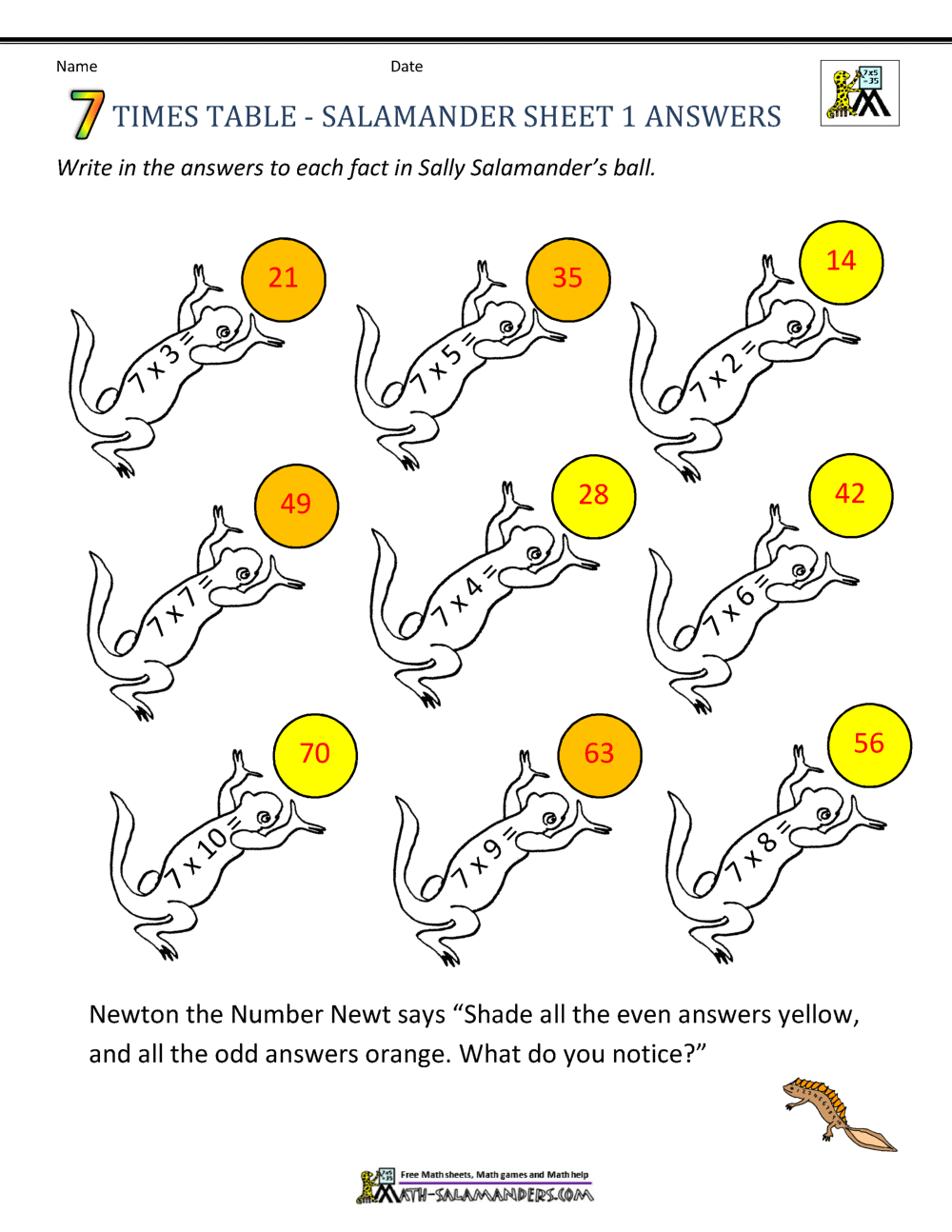

Do the 3s first then the 6s - expect these to be more difficult and make an allowance in time There's also a finger method which I'm not a big fan of.
The nine times tables can use the ten times tables and work back or compensate - so for 5 x 9, think ( 5 x 10 ) - 5 = 50 - 5 = 45, also note that the digits in the answer always add to 9. The 2s, 4s and 8 times tables are doubles of each other - with many common answers - 2x8=16, 4x4=16, 8x2 = 16. What are the Tips and Tricks for Learning Each Times Tables Next week I'll suggest some fun games that you can play at home or in the car. When you're trying to speed up recalling tables introduce some games. Talk about the numbers are you encounter them "5 x 8 = 40 that's mummy's age", "3 x 6 = 18 that's our house number". These are special "hand or foot holds" that can act as memory hooks - emphasize them! Each times table has a square number 3x3, 7x7 etc ( see the coloured numbers in the tables grid above ). Keep reminding your child that 3 x 4 is the same as 4 x 3 - this effectively halves the number of tables facts. Finally, move on to completing the answers in any order. Then move on to completing the answers quickly in order - on paper or verbally with your child. Start with chanting and writing them out slowly in order. Stick to one times table at a time to minimise confusion. What are the Methods for Learning Tables? So just be aware that what makes sense to you might confuse your child. There are many different ways to say the tables and they're all correct - but it helps if you're consistent and if you adopt the language your child already uses at school. The UK National curriculum has recently re-included the 11 and 12 multiplication tables many schools do them anyway - I think these should be learned last and separately - even though the 11s are a doddle! Language and Times Tables Then the 8x tables and the 7x tables - which are generally regarded as difficult. After this you could the 3x tables followed by the 6x tables. The 4x tables are double the 2x tables and the 9x tables have a few shortcuts to help you learn them. There's some debate as to which are easiest from here but the 4x, 9x are usually next. The 5x tables are helped by knowing the 10x tables and the fact that we have 5 fingers. The 10x tables are a natural part of counting, the two times tables are familiar because of doubling, even numbers and they simply chant so well 2, 4, 6, 8, who do we appreciate. We, of course, start with the easy tables first - the Easy Times Tables are the 10x, 2x and 5x times tables. 
It sounds harsh but this level of "number fluency" is the ideal foundation for any child - so how do we get there? What Order Should We Learn Times Tables In? That leaves no time for counting the way up to the answer from 2x, 3x, 4x etc - the answer has to pop out of memory pretty much instantly. Unfortunately, they aren't.Ĭhildren need to be able to recall any times tables answer within two or three seconds - preferably in one second. It's tempting to think that being able to answer the times tables and mastering them is the same thing. One secret is choosing the right route - we'll deal with that later but first let's consider what we mean by "commit to memory" and "mastering." This diagram shows the 81 times tables multiplication facts that every child needs commit to memory - we'll leave the 11 and 12x tables aside for a moment. Think of the times tables like a daunting climbing wall - when you're a first-timer standing at the foot looking up it's scary - but once you start making a few hand and foot holds it gets much easier. Kickstart not only identifies which tables your child knows but it will also guides you in which are truly mastered. In 10 minutes you'll have a times tables progress report To do this we've developed a unique new tables quiz that identifies exactly where to start. It makes sense to take stock of where your child is with tables before trying to help them. Firstly, find out which tables they know and don't know
#7 times tables multiplication trick how to
In this article, I'm going to look into learning times tables, help you identify your child's knowledge of them and provide some useful tips on how to help at home. Times Tables (or multiplication tables/facts) seem easy when you've already learned them but they drive fear into many children - and this in turn has a negative effect on learning.






 0 kommentar(er)
0 kommentar(er)
